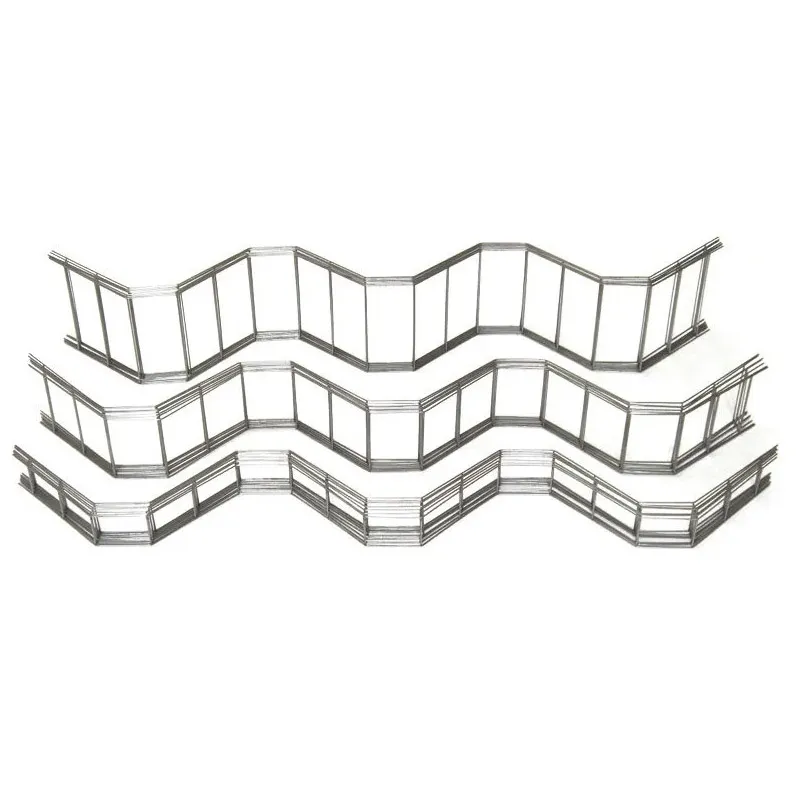
- Mobile Phone
- +8613931874955
- sales@cntcmetal.com
field fencing cost per foot
The Cost of Field Fencing Per Foot A Comprehensive Guide
Field fencing is an essential aspect of agriculture and land management, providing security for livestock and safeguarding crops. Understanding the costs associated with field fencing is critical for farmers, ranchers, and landowners alike. This article explores the various factors that influence the cost of field fencing per foot, helping you make informed decisions for your property.
1. Types of Fencing Materials
The type of material you choose for your field fencing plays a significant role in the overall cost. Common options include
- Barb Wire One of the most cost-effective options, barb wire can range from $0.10 to $0.50 per foot. However, it may not be suitable for all types of livestock, as some might get injured on the barbs.
- Electric Fencing Electric fencing provides a deterrent for animals and can cost between $0.30 and $1.00 per foot depending on the type of wire and power source used.
- Wooden Fencing Though more aesthetically pleasing, wooden fences can be expensive, often costing between $1.50 and $3.00 per foot. The quality of the wood and type of design can significantly impact the price.
- Vinyl and Composite Fencing These materials are durable and require low maintenance but come at a higher price point, ranging from $2.00 to $4.00 per foot.
- Chain Link Fencing While primarily used for security around properties, chain link fencing can cost between $1
.50 and $3.00 per foot, depending on the height and gauge.2. Labor Costs
field fencing cost per foot

In addition to material costs, labor is another component that can significantly increase the overall expense of field fencing. Hiring a professional contractor may cost anywhere from $0.50 to $2.00 per foot, depending on location and the complexity of the installation. DIY options can save money, but it's essential to have a good understanding of the installation process to avoid costly mistakes.
3. Terrain and Location
The terrain of the field plays a crucial role in fencing costs. Rocky or uneven ground may require additional labor and specialized equipment, increasing the overall cost per foot. Locations with high wildlife activity might also necessitate additional measures, such as higher fencing or reinforced structures, contributing to increased expenses.
4. Length and Perimeter
The total length of fencing required naturally affects the overall cost. Most companies offer bulk discounts, so larger projects may see a reduced rate per foot. It's essential to calculate the entire perimeter that needs fencing to get an accurate estimate.
5. Maintenance and Longevity
When considering fencing costs, it’s essential to think about long-term maintenance. Cheaper materials may save money upfront but could lead to higher costs down the line due to repairs or replacements. Conversely, higher-quality materials may have a steeper initial price but offer greater durability and lower maintenance requirements over time.
Conclusion
Understanding the cost per foot of field fencing is vital for any landowner or farmer. By taking into account the types of materials, labor costs, terrain, size of the property, and maintenance needs, you can develop a fencing strategy that meets your budget while ensuring the safety and security of your livestock and crops. Whether opting for a simple barbed wire fence or a more sophisticated electric option, careful planning will help you achieve the best results for your land.
share:
-
Your Source for Concrete Wall Ties and Masonry AccessoriesNewsJul.10,2025
-
Unlocking the Power of Iron Wire for Every ProjectNewsJul.10,2025
-
Explore Advanced Chain Wire and Stainless Steel Mesh FencingNewsJul.10,2025
-
Discover the Benefits of Annealed Wire ProductsNewsJul.10,2025
-
Discover China Stainless Steel Wire Mesh SolutionsNewsJul.10,2025
-
Build with Confidence Using High-Performance Masonry AccessoriesNewsJul.10,2025
-
Why Sacrificial Formwork Is Redefining Underground ConstructionNewsJun.06,2025



















